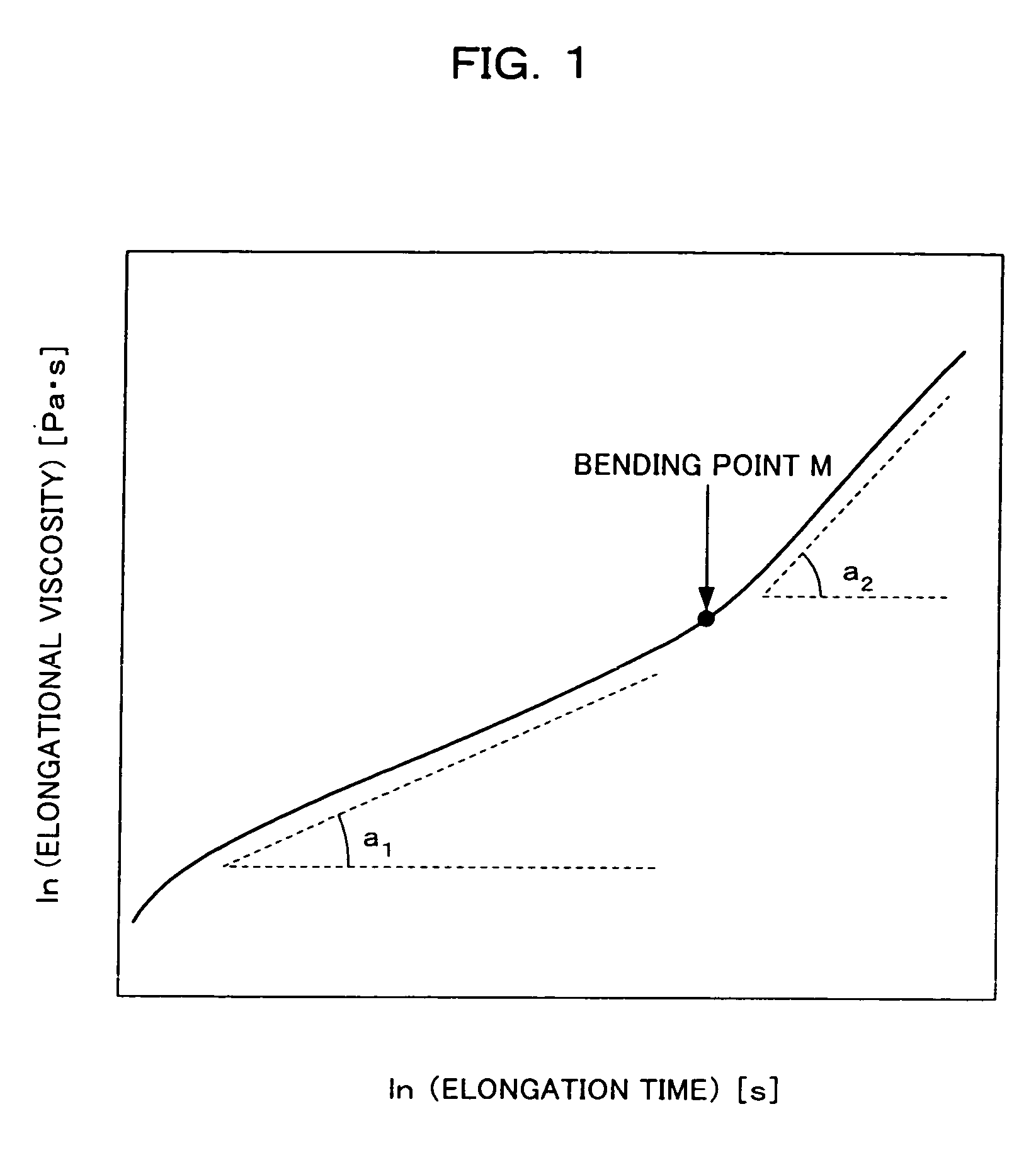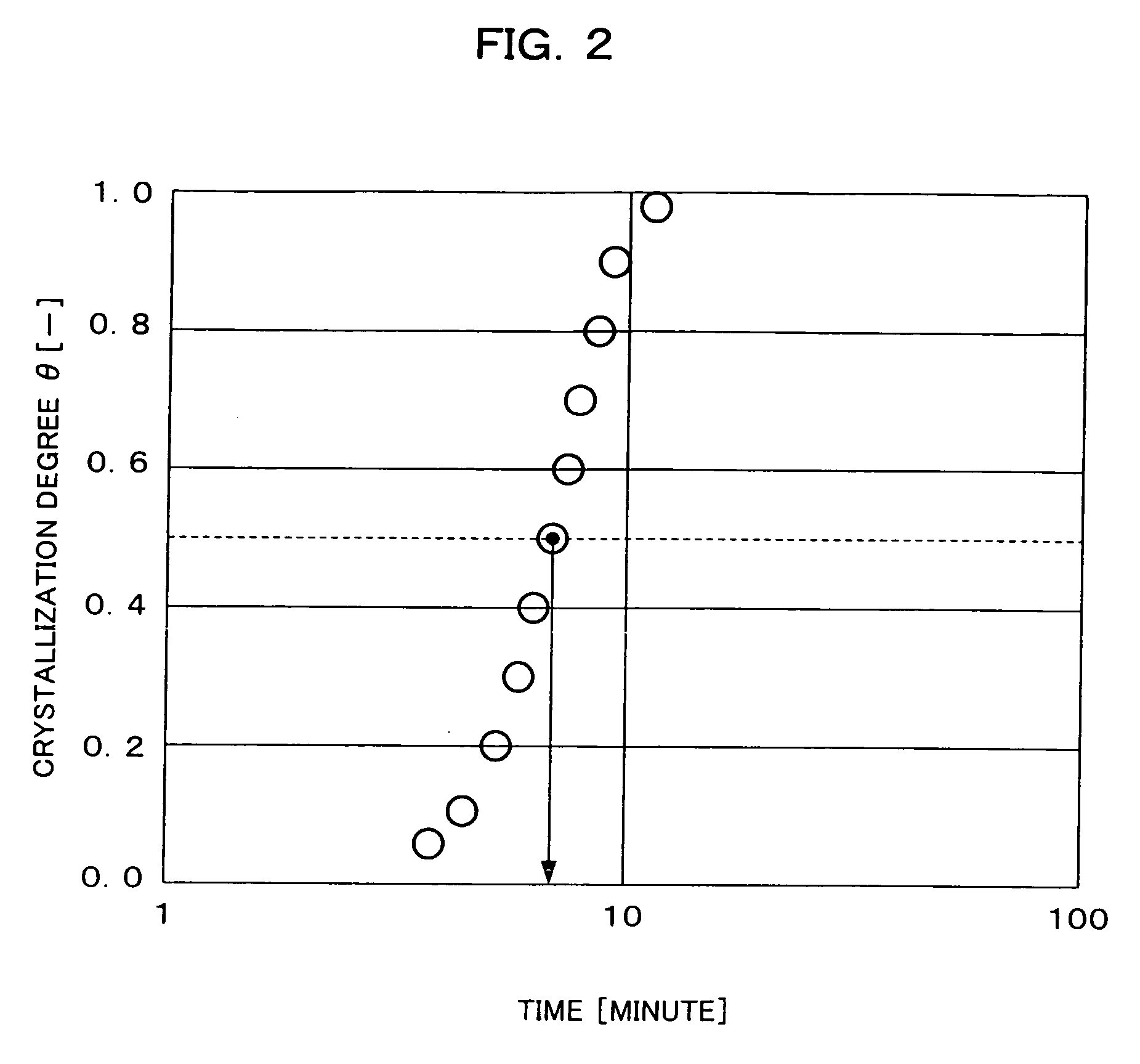Biodegradable polyester resin composition, process for producing the same and formed article and molded and molded article using the same
- Summary
- Abstract
- Description
- Claims
- Application Information
AI Technical Summary
Benefits of technology
Problems solved by technology
Method used
Image
Examples
example
[0058] The present invention will now be described in detail based on Examples, but the present invention is not limited to these Examples. The measurement methods of property values in Examples and Comparative Examples are as follows. [0059] (1) Molecular weight (−): Measured using a gel permeation chromatography (GPC) instrument equipped with a differential refractometer (made by Shimadzu Corporation) eluting with tetrahydrofuran at 40° C. and calculated based on standard polystyrene. [0060] (2) Flexural modulus (GPa): In accordance with the method described in ASTM-790, a test piece of 150 mm×10 mm×3 mm was prepared and load was applied at a deformation rate of 1 mm / minute to measure the flexural modulus. [0061] (3) Melting point (° C.) : Measured using a differential scanning calorimeter DSC-7 (made by Perkin Elmer Inc.) at a temperature increase rate of 10° C. / minute, and the temperature at which a melting endothermic curve has the extreme value is defined as the melting point....
examples 1 to 3
[0104]100 parts by mass of A: polylactic acid (weight average molecular weight 140,000, L-type 99%, D-type 1%, melting point 168° C., MFR 11 g / 10 minutes) which is a biodegradable polyester resin, 4 parts by mass of S-BEN E which is a layered silicate and 1.0 part by mass of fine talc powder which is a nucleating agent (available from Hayashi Kasei Co., Ltd., average particle size 2.5 μm) were dry-blended using a twin-screw kneading extruder (made by Ikegai Corporation, PCM-30, die diameter 4 mm×3H, kneading temperature 200° C.), and supplied to the extrusion feeder. PEGDM of I which is a (meth)acrylic acid ester compound was used in a proportion shown in Table 1, and a mixed solution of the PEGDM, di-t-butyl peroxide which is liquid peroxide and acetyl tributyl citrate which is a plasticizer was prepared so that the proportion thereof was 1:2:5 parts by mass. The obtained mixed solution was supplied to the middle part of the extruder using a liquid metering pump. The dry-blended re...
examples 4 to 13
[0113] The kind and the mixing ratio of the biodegradable polyester resin and the (meth)acrylic acid ester compound in Example 1 were changed as described in Tables 2-1 and 2-2. Except for that, a biodegradable polyester resin composition was prepared in the same manner as in Example 1.
[0114] The obtained biodegradable polyester resin composition and carbon dioxide gas having a concentration of 1.0% by mass which is a foaming agent were supplied to a twin screw foaming extruder (made by Ikegai Corporation PCM-45, die lips: 0.7 mm in width×65 mm in length) and a foam sheet was prepared under conditions of a kneading temperature of 200° C. and a die temperature of 160° C. Properties of the resin compositions and the foamed articles obtained are shown in Tables 2-1 and 2-2.
TABLE 2-1Ex. 4Ex. 5Ex. 6Ex. 7Ex. 8biodegradablekindAAABCpolyester resinpart(s) by mass100100100100100(meth) acrylickindIIIIIVIIacid ester compoundpart(s) by mass0.100.100.100.100.10Layered silicatekind3.3.3.3.3.pa...
PUM
| Property | Measurement | Unit |
|---|---|---|
| Temperature | aaaaa | aaaaa |
| Percent by mass | aaaaa | aaaaa |
| Percent by mass | aaaaa | aaaaa |
Abstract
Description
Claims
Application Information
 Login to View More
Login to View More - R&D
- Intellectual Property
- Life Sciences
- Materials
- Tech Scout
- Unparalleled Data Quality
- Higher Quality Content
- 60% Fewer Hallucinations
Browse by: Latest US Patents, China's latest patents, Technical Efficacy Thesaurus, Application Domain, Technology Topic, Popular Technical Reports.
© 2025 PatSnap. All rights reserved.Legal|Privacy policy|Modern Slavery Act Transparency Statement|Sitemap|About US| Contact US: help@patsnap.com


